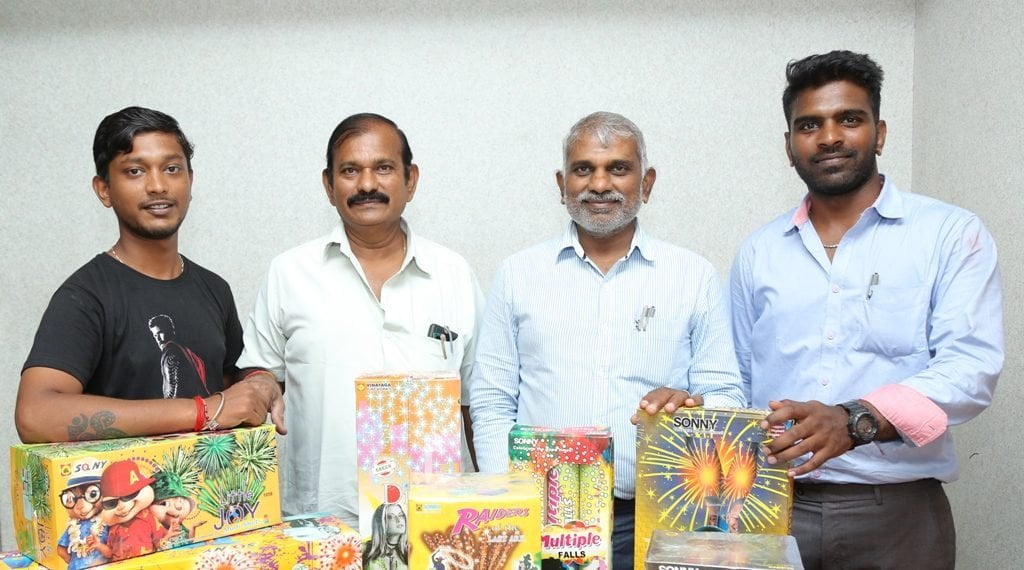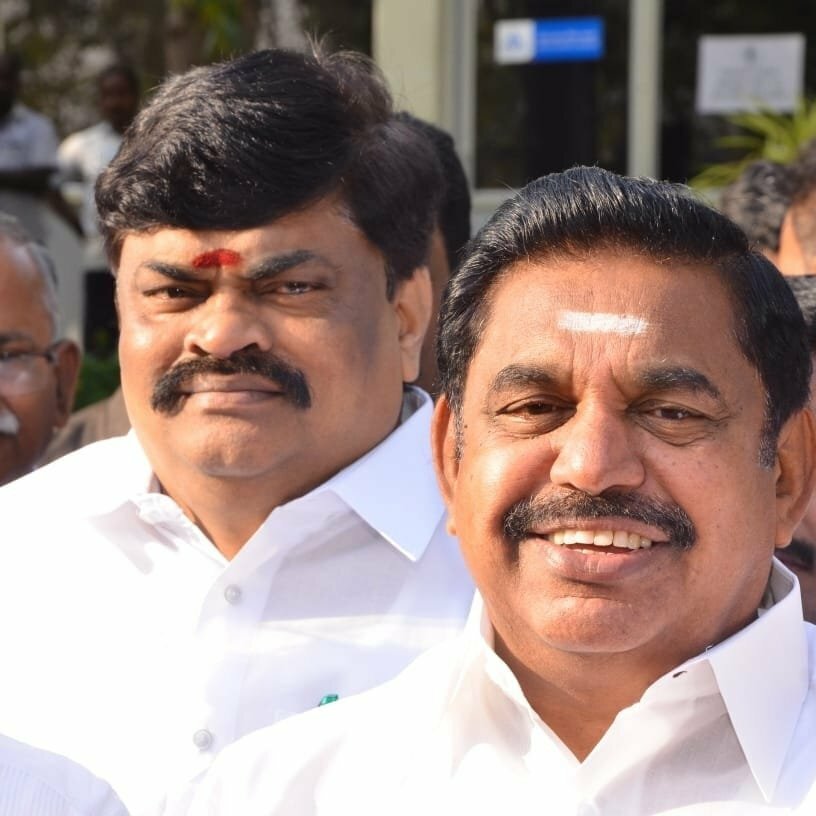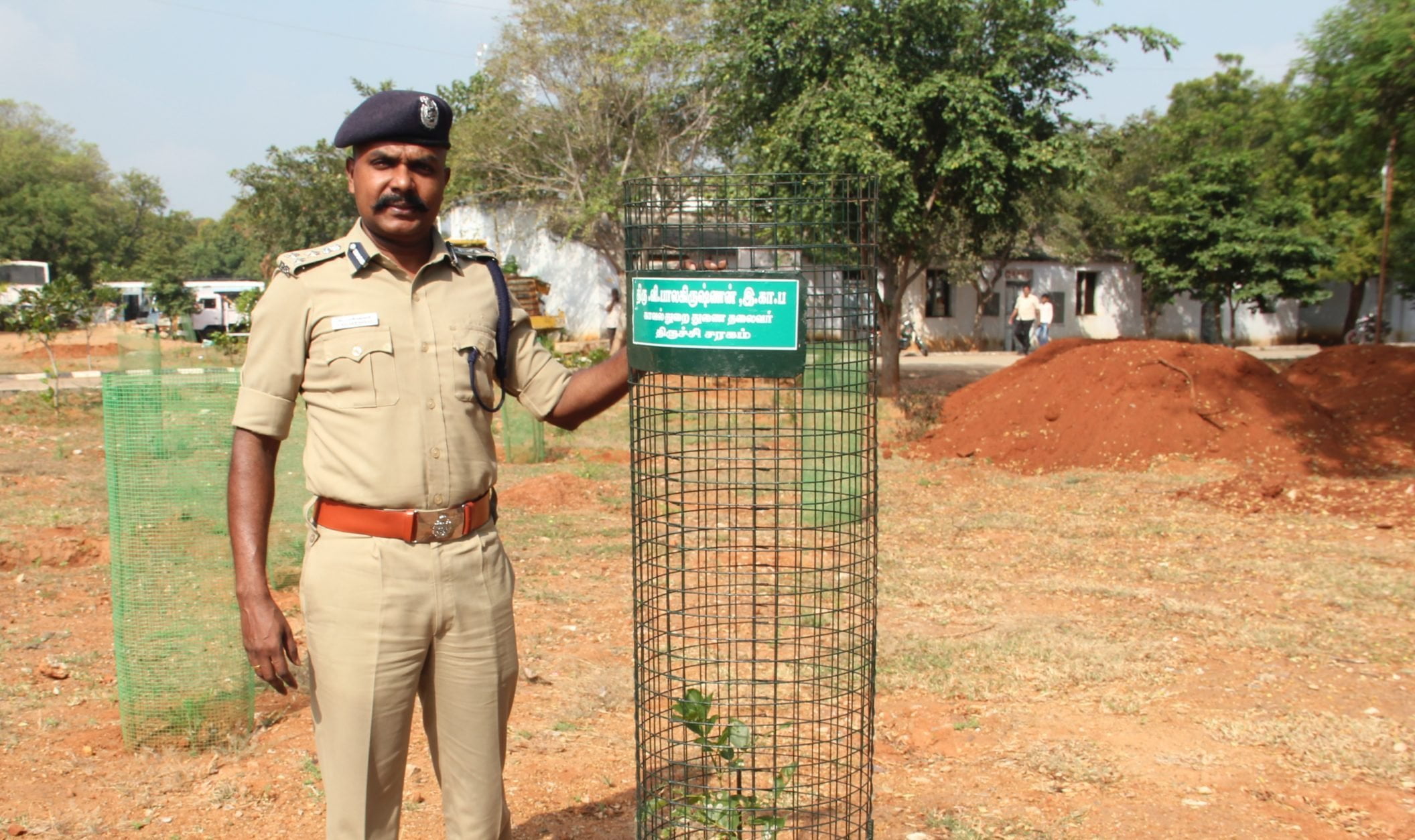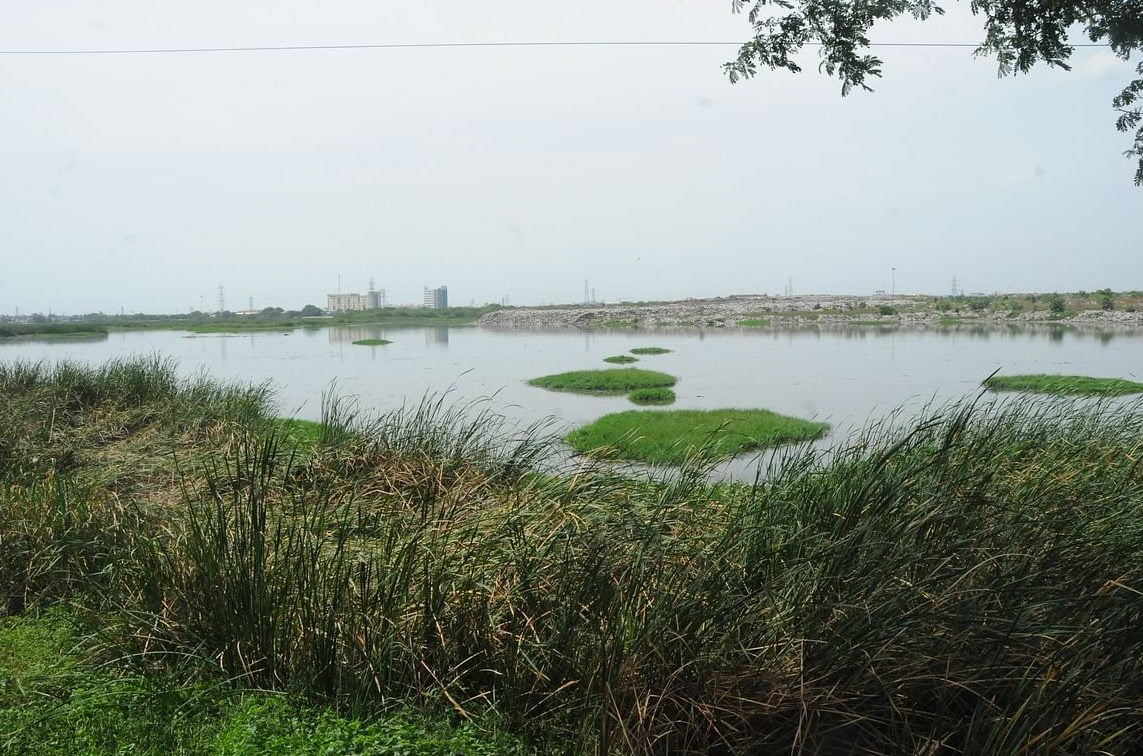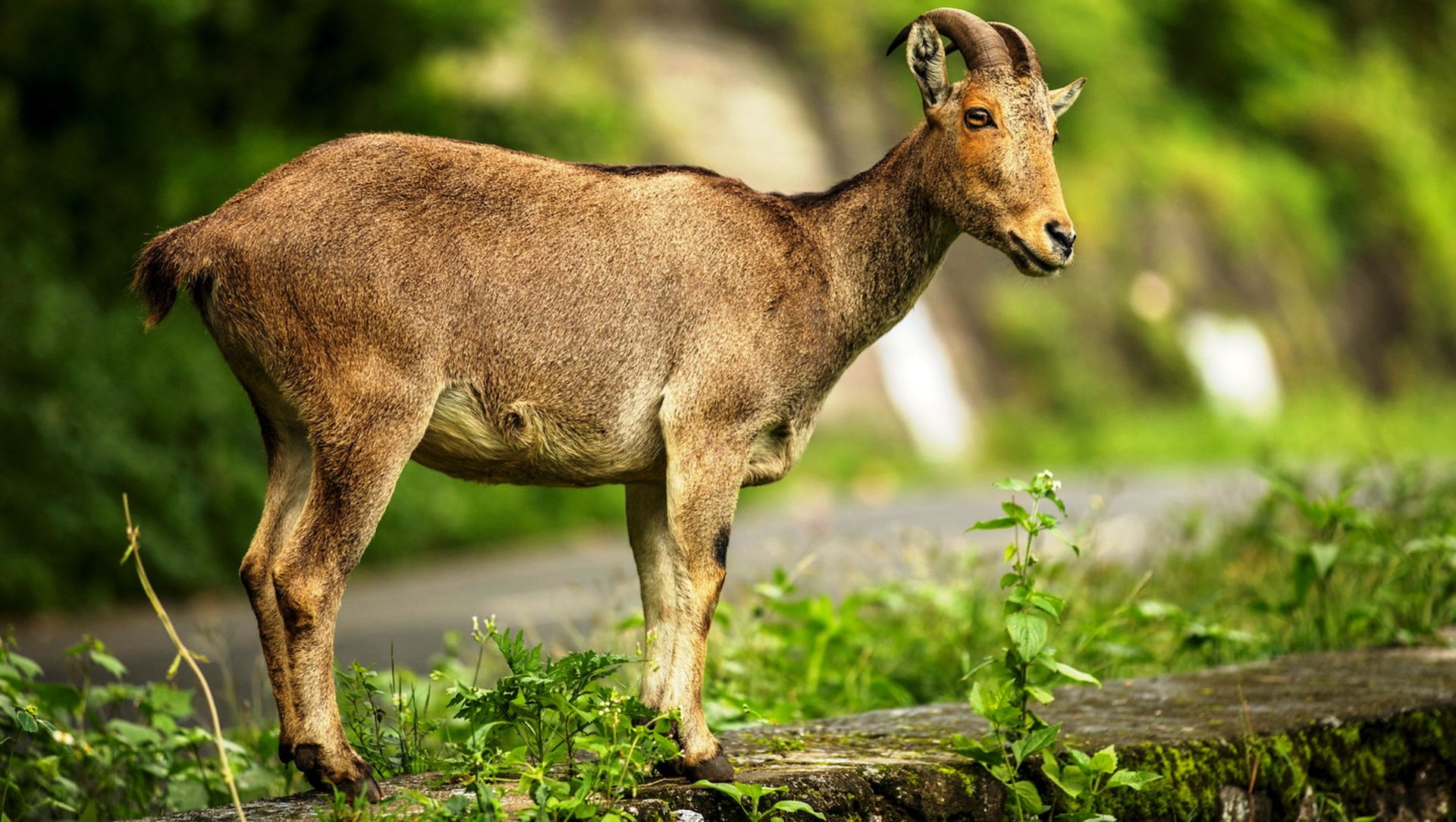Vinayaka Sony Fireworks Group Executives Karvannan and Ganesan Explain!
The serene month of Aipasi, marked by rain-soaked soil, trees, and lush vegetation, ushers in the beginning of the frost season, with cool breezes and drenching downpours. Amidst this chilly atmosphere, the vibrant festival of Diwali is celebrated. Early morning oil baths in heated water, new clothes, sweets, savory dishes, and fireworks—these are the hallmarks of this joyous occasion.
Without fireworks, Diwali wouldn’t feel as sweet, and food wouldn’t taste as delicious. From children as young as five to adults up to sixty, everyone delights in the bright fireworks that illuminate Diwali. The excitement of sparklers, ground spinners, fountains, and an array of other firecrackers brings joy to both young and old. For the more daring, there are louder firecrackers like bombs and rockets, all of which have become intertwined with our lives.
The history of fireworks dates back over 2,000 years to China, where a piece of saltpeter that fell into a fire and sparked is believed to be the origin of firecracker production. Although China is the birthplace of fireworks, their use has spread worldwide. In Tamil Nadu, Sivakasi became the hub of firecracker manufacturing in 1914.
Over time, the firecracker industry in Sivakasi grew, earning the region the nickname “Little Japan” from India’s first Prime Minister, Pandit Jawaharlal Nehru. Today, more than 1,000 firecracker factories in Sivakasi provide livelihoods for nearly 800,000 people. Once confined to Diwali, firecrackers are now used for various celebrations, leading to year-round operation of these factories.
Ninety percent of the firecrackers used in India are manufactured in Sivakasi, involving investments worth thousands of crores of rupees. However, when some merchants began importing cheaper Chinese firecrackers, the Sivakasi industry suffered, affecting both production and employment. Adding to the woes, lawsuits were filed claiming that firecrackers severely harm the environment.
Facing multiple challenges, many firecracker manufacturers shut down their factories, leading to protests by workers who lost their jobs. Just when the industry seemed doomed, the Supreme Court of India refused to ban firecrackers outright but imposed restrictions, directing manufacturers to produce “green crackers” that are less harmful to the environment. This decision breathed new life into the industry.
Vinayaka Soni Fireworks Group director and Tamil Nadu Fireworks and Cap Manufacturers’ Association President Ganesan Panchurajan asserts that Indian-made firecrackers are environmentally conscious, and therefore, do not harm the environment. We met him at his office in Sivakasi to discuss this further.
Ganesan invited us to visit one of their factories in Alamarathupatti, near Thiruthangal, to see firsthand the safety measures they implement in the manufacturing process, ensuring minimal environmental impact.
The Cool Environment of the Factory
As we entered the factory premises, we noticed the outside temperature was significantly lower, thanks to the neem trees surrounding the facility. Among these trees, hundreds of small rooms were scattered, where four workers per room were busy making aerial fireworks.
Ganesan explained the firecracker production process, observing the workers and offering advice. We then visited another shed where “Sivakasi crackers” were being made. After inspecting the drying firecrackers, Ganesan continued to explain the intricacies of the trade.
Livelihoods of 800,000 People
“Ninety-five percent of the firecrackers used in India are produced in Tamil Nadu’s Virudhunagar district, particularly around Sivakasi. Over 1,070 small, medium, and large firecracker factories operate here, employing around 300,000 workers directly. An additional 500,000 people are employed in related industries, providing livelihoods for around 800,000 people,” Ganesan said.
He noted that the central government has classified Virudhunagar and Ramanathapuram as backward districts due to low rainfall, poor agriculture, and lack of large industries.
Challenges of the Firecracker Industry
The firecracker industry in Sivakasi began in 1914, before India gained independence, and has faced numerous challenges over the years. About 30 years ago, the industry was accused of employing child labor, leading to a major crisis. However, today, there are no child laborers in this industry, Ganesan clarified.
In 1998, the central government imposed excise duties on firecrackers, which forced manufacturers to increase prices, slowing down sales. Before the industry could recover, the threat of Chinese firecrackers loomed large. Nirmala Sitharaman, then Minister of State for Commerce and Industry, issued orders to all Indian ports to thoroughly inspect containers and curb the import of Chinese firecrackers. However, Chinese firecrackers still have some impact on the Indian market today.
Rebirth of the Firecracker Industry
Next, the firecracker industry faced lawsuits in the Supreme Court, claiming that firecrackers contribute to air and noise pollution. The National Green Tribunal ruled that firecrackers do not pose significant environmental threats. After overcoming these challenges, the firecracker industry, like a phoenix, has risen again.
At this point, Ganesan introduced us to his son, Amarnath Ganesan, who had just returned from studying abroad and was now helping to manage the family business. Ganesan, along with his brother Karvannan Panchurajan and nephew Abhishek Karvannan, took us on a tour of their large firecracker storage facility.
Safety Measures in the Factory
Amarnath and Abhishek explained the extensive safety measures in place at the factory. The small rooms scattered throughout the factory are designed for safety, with adequate spacing between each room to prevent accidents. There are no electrical appliances in these rooms, and workers are not allowed to use mobile phones. Sand and water buckets are placed strategically for safety.
“Most accidents in the firecracker industry are caused by friction. We are constantly working to prevent friction-related accidents, ensuring the safety of our workers,” they said.
Innovation in Firecrackers
Ganesan explained that their company has evolved from producing traditional firecrackers to developing innovative, colorful ones. “We are working on controlling the emission of fine particles—thousands of times finer than a strand of hair—that disperse when firecrackers are lit. With the support of central and state governments and scientists from the National Environmental Engineering Research Institute in Nagpur, we are striving to reduce these particles and even produce smoke-free firecrackers in the future,” he said.
The Future of the Firecracker Industry
Ganesan proudly shared that their factory spans over 60 acres, employing more than 300 workers, with 13 factories in total. When they inherited the business from their father, they had only two rooms, but through hard work, they have expanded it into a massive operation.
Support from the Government and Judiciary
Ganesan expressed gratitude for the support of the central and state governments and the judiciary in protecting the livelihoods of 800,000 workers. He specifically mentioned Prime Minister Narendra Modi, Finance Minister Nirmala Sitharaman, Chief Minister Edappadi K. Palaniswami, and Dairy Development Minister K.T. Rajenthra Bhalaji for their unwavering support.
In conclusion, Ganesan emphasized that firecrackers play a significant role in Indian festivals, transcending religious, ethnic, and linguistic differences, and uniting people across the country.
By: M. Umapathi
Photos: Eeswaran

